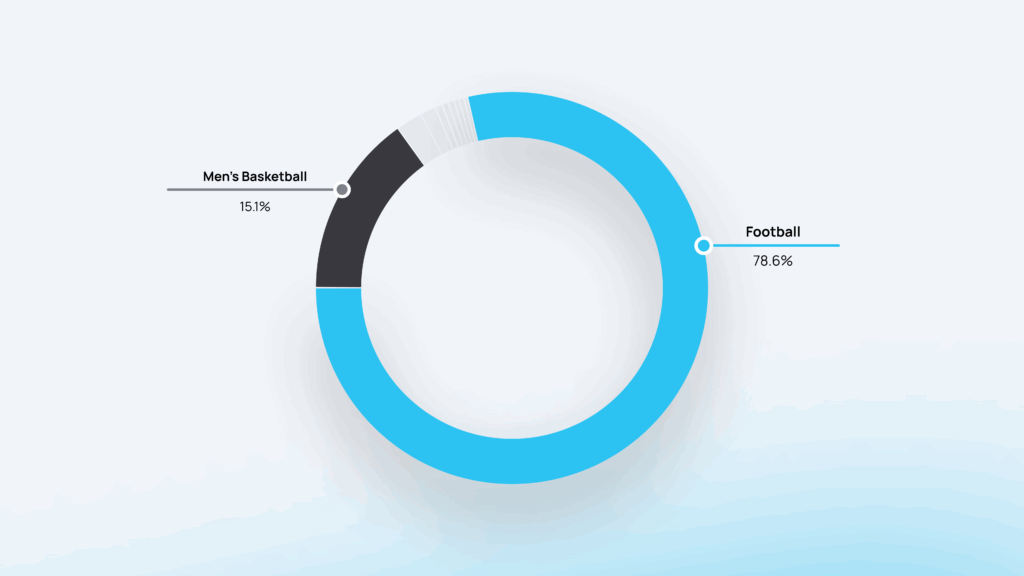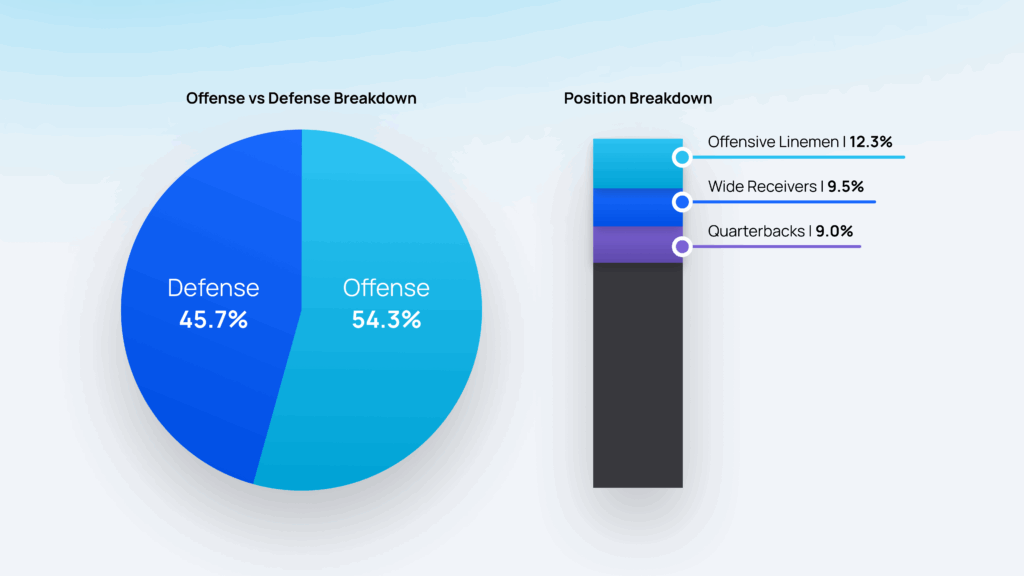With July 1, 2025 on the horizon and more than 60 schools already strategically planning with Teamworks General Manager (GM), the early usage metrics offer a valuable look at how top athletic departments are positioning themselves for success. Here are three key insights that reveal what’s happening behind the curtain:
1. Football Still Drives the Enterprise, and the Strategic Planning Reflects It
Among the programs already managing rev-share through Teamworks GM, Football represents 78.6% of all planned investment, more than five times that of Men’s Basketball (15.1%), and nearly 30 times more than Women’s Basketball (2.6%). Together, those three sports make up the vast majority of current budgeted activity.
But the full picture tells a more important story. Beyond the top two revenue drivers, sports like Women’s Track & Field (1.2%), Baseball (0.5%), and Women’s Soccer, Tennis, Volleyball, Golf, and Softball, all under 0.5% individually, are beginning to surface in GM planning as well.
While the curve is steep, it’s also strategic. Programs are starting with the sports where NIL complexity and financial stakes are highest, but as the platform grows, so does the opportunity to extend structured planning across the full athletic department.

2. Strategic Leaders Are Not Waiting Until July 1 to Get Started
As of today, more than 60 programs, nearly evenly split between Power Five and Group of Five, have already adopted Teamworks GM. But adoption is only part of the story.
Together, these early movers have already committed nearly $500 million through the platform, and that number is growing by the hour as more programs upload budgets and prepare for execution.
These programs aren’t waiting for July 1 to get organized. They’re using GM now to put structure, strategy, and accountability in place, ensuring they’re ready to compete, not just comply, from day one.

3. Position-Level Planning Inside Football Is Getting More Sophisticated
Planning isn’t stopping at the team level, it’s drilling down into the depth chart. Early Teamworks GM data shows how programs are thinking positionally about how they allocate rev-share:
- Offensive Linemen represent the highest total dollar commitment, likely driven by room size and YoY retention priorities.
- Quarterbacks lead in individual planned allocation, reflecting their on-field impact and NIL market value.
- On defense, the Defensive Line currently leads in total planned allocation, with the Secondary surprisingly close behind.
As more programs commit budgets and finalize rosters, we’ll continue tracking how position-level planning in college football compares to NFL compensation structures from skill positions to trenches and report back as the numbers settle.

As July 1 approaches, one thing is clear: the programs that will thrive in the new revenue-share era are the ones building infrastructure now. Teamworks GM is a strategic command center that gives athletic departments the clarity, control, and confidence to execute at scale. From aligning multi-million-dollar football budgets to refining position-level strategy and preparing non-revenue sports for participation, early adopters are using GM to get ahead of complexity and drive smarter, faster decisions.
The takeaway? Revenue sharing isn’t a switch you flip overnight. It’s a strategic system you build. And the schools investing in that system today are setting the standard for tomorrow. With GM, they’re not just getting ready for July 1, they’re setting the pace.
